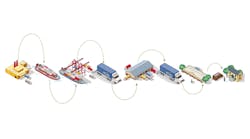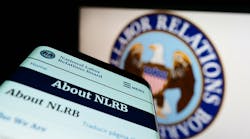Businesses today consistently have to do more with less, which means finding new ways to improve employees’ productivity and process efficiency. This isn’t a small challenge. Inefficient business processes cost Fortune 500 companies alone more than $480 billion dollars a year. (It’s even bigger in the public sector, where organizations have lost up to $1.3 trillion dollars per year through inefficiency.)[1]
The key to improving productivity and efficiency is driving the valuable individual behaviors that underpin critical processes. What if you could motivate your employees in the same way games engage people: through competition, cooperation, achievement, status and reward? Games provide us with some of the most powerful behavior motivators we have. So while the answer isn’t to turn your business into a game, taking the mechanics behind games and applying them to business tools and processes can be a highly effective way to get more efficiency and productivity from your people. (This field of translating the engagement and motivation strategies behind games to the world of business properties is called, somewhat obviously, gamification.)
One of the biggest takeaways from games is the idea that the best rewards are often the ones that have nothing to do with money. They have more to do with status and reputation — with making people feel smart, successful and socially valued. Research shows that this holds true in the workplace. “Make Their Day,” an employee motivation firm, found in a recent study conducted in partnership with Badgeville that 83% of employees said recognition for contributions is more fulfilling than rewards and gifts. Further, 71% said the most meaningful recognition they have received had no dollar value.[2] This number has only increased since the last time the question was asked, in 2007.
The results also corroborate a 2009 independent report released by McKinsey & Company, which revealed that praise, attention from leaders and opportunities to lead projects were more effective motivators than performance-based cash rewards, increase in base pay or stock options.[3]
With so much business process now taking place digitally and/or being tracked that way, there are myriad opportunities to put the power of gamification and the new realities of motivation to work. Shipping and supply chain management, with their intense reliance on process, offer even more opportunities than most jobs. Creating a system of virtual rewards, increased status, positive reputation and social acknowledgement can drive increases in the high-value behaviors that move businesses forward toward their goals. Here are some recommendations for where to get started.
Motivation by Function
Purchasing
● Who negotiates the lowest prices for materials? Award points based on vendor pricing. Keep track of progress on a leaderboard to keep people motivated.
● Who arranges for the fastest materials delivery? Similarly, faster speeds here would be awarded more points. At the end of a set period of time, the winner could earn a virtual badge denoting them as the fastest person in the department.
● Who keeps in touch most regularly with vendors? If you log calls and emails, this would be an easy metric to measure and reward.
Manufacturing
● Begin a team competition for fewest rejects/defects. Over the course of a quarter or year, which shop floor team produces the highest quality, as measured by the fewest number defects or rejects? Again, creating a leaderboard that updates in real-time allows participants to see how they stack up — and because everyone else can see it, too, they will keep working to come out on top.
● Another team competition: speed. The complement to quality in manufacturing is speed. Try awarding points not just for a defect-free product, but also based on how quickly that product is finished.
Fulfillment
● Who’s most accurate in “pick-pack-ship?” There’s a lot of room for error in frantic shipping departments. By assigning points for accuracy in retrieving, packing and sending products, you can motivate employees to make it as important as speed.
● Who’s most accurate in keeping inventory? Inaccurate inventory records can sink shipping accuracy before a product ever gets ordered. Rewarding accuracy, whether in the form of virtual rewards, increased status or a combination of the two, can ensure smoother operation.
Billing
● Who collects the quickest? The winner could earn a virtual reward each month, and you could keep employees engaged by offering a further (perhaps even physical) reward for the Accounts Receivable employee who wins the most months in a year.
● Who has the lowest total daily sales outstanding? It’s not just speed that counts, but also the total bill outstanding. Have employees go head-to-head for the lowest Daily Sales Outstanding.
What behaviors you gamify, and how you do so, will depend on your organization’s particular structure and goals. The key to an effective and sustainable gamification program is that you know what matters to your business and you know what behaviors support it. Keep in mind, also, that over time you will want to adjust the behaviors you reward for and the way in which you reward them, so that employees don’t get jaded. Remember that the goal of gamification is not to provide a quick, one-time jolt but to help you drive the best out of your employees every day over the long term.
Kris Duggan is Chief Strategy Officer and Co-Founder of Badgeville.
[1]http://www.techceocouncil.org/news/2010/10/06/reports/one_trillion_reasons/
[2]http://maketheirday.com/2013-recognition-preference-research-report/
[3]http://www.mckinsey.com/insights/organization/motivating_people_getting_beyond_money





